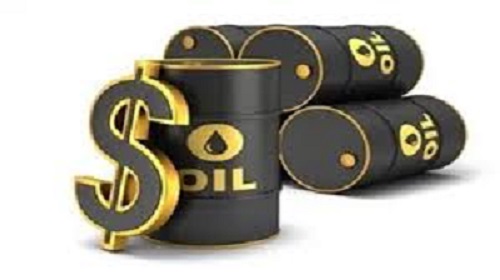Following the low increase in United States’ stockpiles, coupled with expectations that oil demand will improve as European countries and US cities moved to ease lockdowns, oil price jumped yesterday by 11.88 per cent to $22.89 per barrel.
Reuters reported that the price of the global benchmark, Brent, for June was up by $2.43 to close at $22.89 a barrel.
The more active July contract added $1.83, or 8.05 per cent, to $24.57.
US West Texas Intermediate (WTI) crude futures rose 24.31 per cent or $3, to $15.34, after a 27 per cent plunge over the first two days of the week.
US crude inventories rose by 10 million barrels to 510 million barrels in the week to April 24, data from the American Petroleum Institute (API) showed on Tuesday.
However, analysts had expected an increase of 10.6 million barrels.
Petrol stocks fell by 1.1 million barrels, the API said, compared with analyst forecasts for a rise of 2.5 million barrels.
However, US Energy Information Administration would release weekly data later yesterday.
While storage is rapidly filling up, production cuts by US shale producers – estimated by consultants Rystad Energy at 300,000 barrels per day (bpd) for May and June – should help to slow flows into tanks. The United States is now the world’s biggest oil producer.
Regulators in Texas, the US’ biggest oil producer, will hold a vote on May 5 on whether to enact output cuts.
OPEC and other oil producing nations, a grouping known as OPEC+, agreed this month to cut output by a record amount, around 10 per cent of global supply, to support oil prices.
In addition to the OPEC+ deal, other producers are also pledging reductions.
Oklahoma’s energy regulator said companies could shut wells without losing their leases.
The state is the fourth-largest oil producer in the United States.
Officials in the states of North Dakota are also reportedly examining ways to legally allow output cuts.
That would add to production cuts of almost 10 million bpd agreed by the OPEC and other large producers, including Russia.
The agreed cuts, equivalent to about 10 per cent of global production, are due to take effect from May 1.
Kuwait said it had begun reducing oil supply to the international market without waiting for the deal agreed by major oil exporting countries to take effect on May 1.
With countries that have social distancing measures in place accounting for more than 90 per cent of last year’s oil demand, there are hopes of demand recovery as European countries and US cities moved to ease lockdowns.
Collapsed demand due to travel restrictions to contain the pandemic and a shortage of space to store oil had led to a crash in the prices, with the price of WTI going negative.
However, analysts say they do not expect a repeat of such price shock.
Global oil demand will, however, take until the last quarter of 2021 to recover to its 2019 levels as countries emerge slowly from the coronavirus crisis, Morgan Stanley said yesterday.
Source: THISDAY














